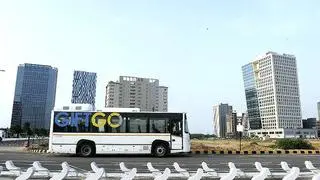Kerala is among those States in the South that send out as many people to elsewhere in the country as they receive migrants from other States.
This fact is brought forth in the ‘Urban India 2011: Evidence Report' by the Indian Institute for Human Settlements (IIHS), Bengaluru.
Much of the migration (female+male; rural+urban) is concentrated around the demographically dominant States of northern India, the report noted.
ECONOMIC ACTIVITY
This has coincided with increasing concentration of investments, economic activity, wealth and jobs around particular centres.
The most significant total migration flows (urban and rural) during the 2001-2010 decade are from Uttar Pradesh, Bihar, Madhya Pradesh, Kerala, and Karnataka.
Key destination states included Delhi, Tamil Nadu, Kerala, Haryana, Uttar Pradesh and Bihar.
Urban migration is much more diverse, but the lead source States continued to be Uttar Pradesh, Bihar, Tamil Nadu, Karnataka and Haryana.
Among key destination States are Kerala, Delhi, West Bengal, Maharashtra, Tamil Nadu and Andhra Pradesh.
INTER-STATE MIGRATION
Uttar Pradesh is the most popular inter-State migration destination, followed by Delhi, West Bengal, Tamil Nadu and Rajasthan.
Delhi leads others as a destination for net rural to urban migration (from Uttar Pradesh, Bihar and Haryana).
Maharashtra, Uttar Pradesh, Haryana and Andhra Pradesh are ranked next in that order.
Delhi is again in the front as the most popular destination with respect total urban to urban migration.
Uttar Pradesh, Maharashtra, West Bengal and Karnataka take up the next positions.
Others showing significant migration to urban areas include Maharashtra, Gujarat, Andhra Pradesh and Karnataka.
WRONG PERCEPTION
The report sought to remove the ‘perception' that explosive rural to urban migration is the primary cause of the state of India's cities.
This is not borne out by evidence. In the last 30 years, migration has contributed about a fifth of the population.
Natural urban population growth contributed about 60 per cent, while the rest was equally split between new town formation and urban boundary expansion or sprawl.







Comments
Comments have to be in English, and in full sentences. They cannot be abusive or personal. Please abide by our community guidelines for posting your comments.
We have migrated to a new commenting platform. If you are already a registered user of TheHindu Businessline and logged in, you may continue to engage with our articles. If you do not have an account please register and login to post comments. Users can access their older comments by logging into their accounts on Vuukle.